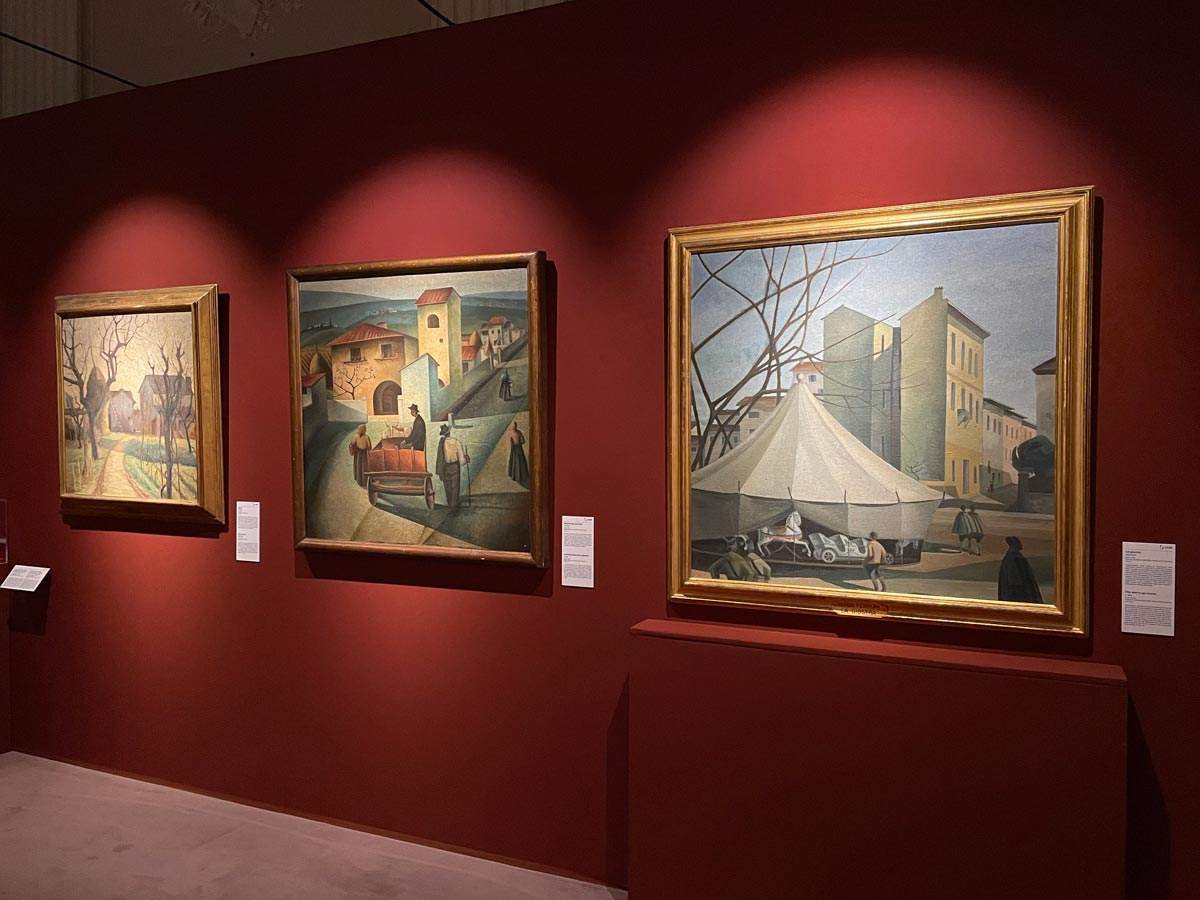Florence, at Palazzo Pitti the first-ever exhibition on Guido Ferroni
From April 20 to July 16, 2023, the Sala del Fiorino at the Pitti Palace in Florence will host the first-ever exhibition on Guido Ferroni (Siena, 1888 - Florence, 1979), an exponent and founder of the Tuscan Novecento group. The exhibition, entitled Guido Ferroni, 1888-1979. The Ancient Sentiment of Painting, intends to present to the general public the figure of Guido Ferroni, reconstructing his artistic and human story in the cultural context of his time, starting from the important nucleus of works in the Gallery of Modern Art: among them La giostra, a canvas that evokes an urban foreshortening immersed in a suffused atmosphere of loneliness and detachment, along the metaphysical lines of De Chirico and Sironi. The painting, from 1920, frames the existential crisis of the new century that makes even previously familiar environments seem foreign and unsettling. The work was purchased by the Uffizi Galleries that same year at the Spring Exhibition of the Fine Arts Society of Florence, which was attended by all the major exponents of the local avant-garde.
The painter’s nephew, architect Duccio Ferroni, who made available documents, artworks, drawings, photographs and objects that belonged to the artist, and Loretta Cosi, widow of Torello Cosi, one of the most passionate collectors of works and documents related to the painter’s entire activity, collaborated on the design and realization of the exhibition. Also on display will be numerous important loans from the collections of the Metropolitan City of Milan, the Galleria d’arte moderna di Roma Capitale and the Pinacoteca comunale di Faenza.
The selection of works highlights Ferroni’s main stylistic phases, characterized by a constant balance between the two roles that the author assumed throughout his life: on the one hand , the artist, confronted with the vast historical-critical thought of the Tuscan twentieth century; on the other hand, the teacher, engaged in the constant and burdensome work of training the youngest generations of artists, to whom he taught the technical aptitude of the Tuscan figurative tradition.
Visitors will first immerse themselves in the works of hisImpressionist beginnings, passing through Futurist influences, until they arrive at the intimate tones of the Tuscan tradition and Metaphysics. Over the years, confirming his adherence to Novecentist poetics, Ferroni took part in the II Mostra del Novecento italiano (Milan, 1929) and in the international exhibitions of the Novecento held in Buenos Aires and Basel, in 1930, and in Helsinki in 1931; from 1930 to 1942 he also participated in all editions of the Venice Biennale.
Guido Ferroni was born in Siena in 1888. Self-taught, he did not follow regular art studies but, having settled in Florence, attended the free school of nude painting at the Accademia. He first exhibited in 1910 at the exhibition of the Society for the Promotion of Fine Arts in Florence. After a debut of Impressionist intonation, Ferroni moved toward new formal solutions, characterized by a reduction in color ranges and an atmosphere of calm, everyday country life. In Florence in 1927, Ferroni joined the Novecento toscano group, which, linked to the literary milieu of Solaria, had been officially formed that same year in Florence. The following year he participated in the group’s first official exhibition, which was hosted in the Lombard capital by the Galleria Milano. He was a lecturer at the Academy of Fine Arts in Ravenna, where he taught from 1933 to 1941, and at the Art Institute of Lucca, where he was tenured from 1941 to 1958. At the end of World War II he settled again in the Tuscan capital, where he continued his painting activities with consistency. He died in Florence on April 21, 1979.
“Ferroni’s paintings and drawings,” stresses the director of the Uffizi Galleries, Eike Schmidt, “on the one hand revisit great artists of the past such as Giotto and Masaccio, champions of Tuscan-ness in the world, and on the other project themselves onto the scene of the most advanced artistic movements in Europe. His gaze is striking for its elegant reluctance, its respect for the people portrayed, and for that deep and very noble historical sense that he himself called ’Etruscan.’”
 |
| Florence, at Palazzo Pitti the first-ever exhibition on Guido Ferroni |
Warning: the translation into English of the original Italian article was created using automatic tools. We undertake to review all articles, but we do not guarantee the total absence of inaccuracies in the translation due to the program. You can find the original by clicking on the ITA button. If you find any mistake,please contact us.





























